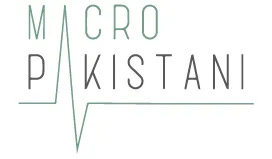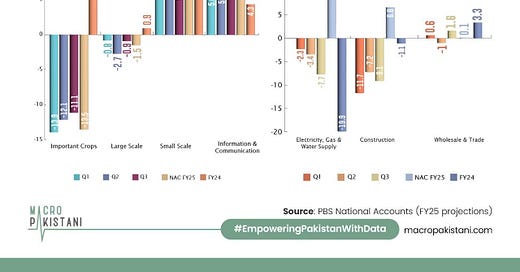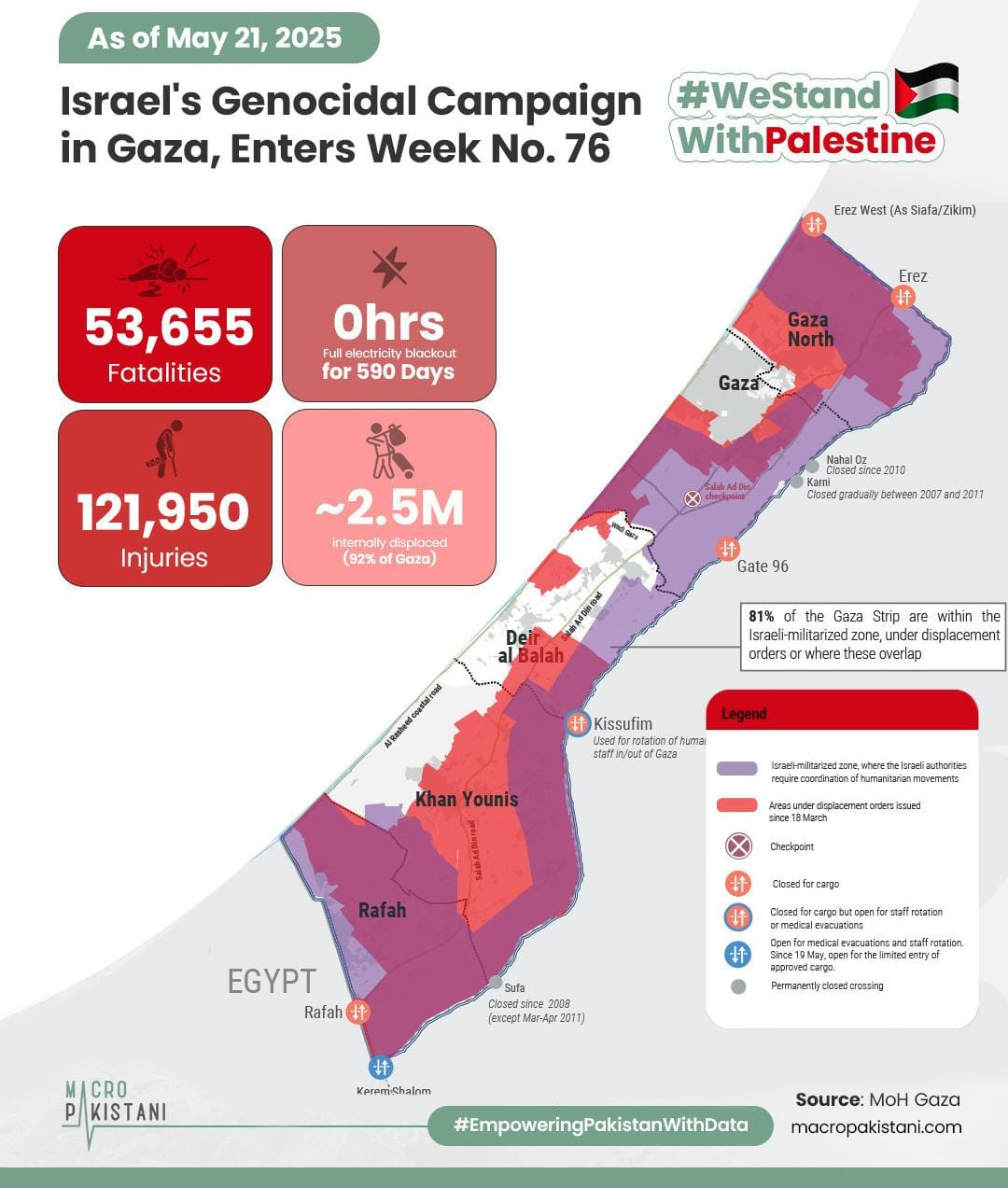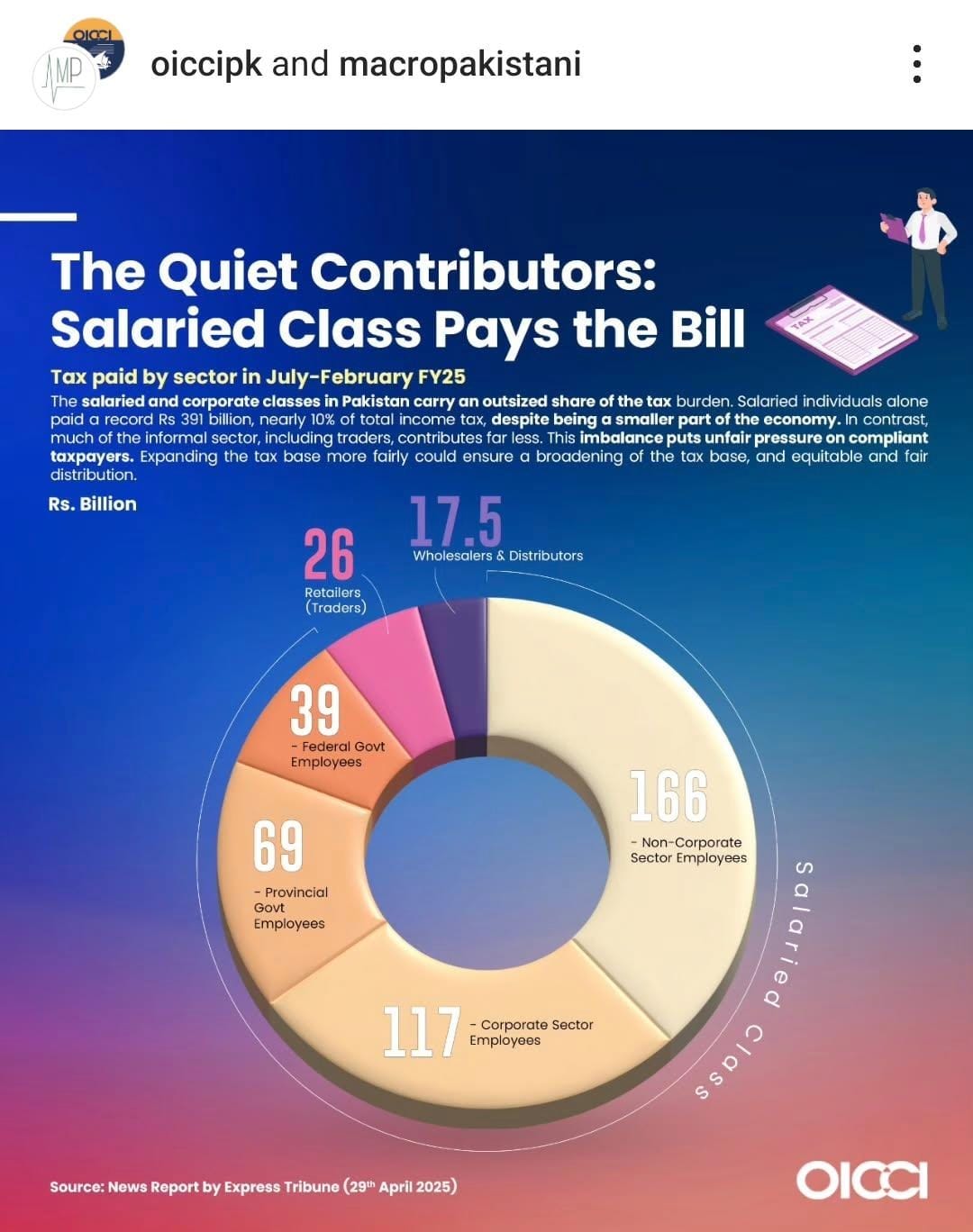The Reality Behind Pakistan’s GDP Mirage
Pakistan claims 2.7% GDP growth in FY25, but with population growing at 2.6%, and optimistic assumptions of the sectoral growth in the last quarter, it’s less recovery and more accounting gymnastics.

If Trump’s team had drafted Pakistan’s recent National Accounts Committee report, it wouldn’t look much different. The 2.68% growth estimate for FY25 feels like it was crafted with the same flair that is notorious for forging numbers gained by eradicating USAID projects and cutting social security in the United States. We’ve seen this before in Pakistan, like our old piece on how the federal budget is often stitched together with assumed inflows like ‘SBP profit’ or by plugging in self-conjured provincial data. The latest Quarterly National Accounts and provisional annual figures are another example of the long tradition of creative number-crunching.
To make the numbers add up, we’d need a Q4 unlike any in recent memory. Large-scale manufacturing would have to stage a sharp recovery, investment activity would need to pick up significantly, and struggling industries would have to post strong turnarounds. It’s less a steady path of growth and more a last-minute attempt to rewrite the story entirely. The government’s claim of 2.7% GDP growth for FY 2024-25 hinges on a surprising 4.8% rise in the industrial sector. This boost depends on a 6.6% uptick in construction and a striking 39.3% surge in electricity output, numbers that depend a lot on expected government spending and power subsidies that haven’t fully materialized yet.
Meanwhile, agriculture barely moved, recording 0.6% growth as major crops like wheat, cotton, and maize took significant hits, dropping 9%, 31%, and 15.4% respectively. Large-scale manufacturing didn’t fare much better, shrinking by 1.5%. On the brighter side, the services sector showed modest progress with a 2.9% increase, helped along by a 6.5% jump in information and communication and nearly 10% growth in public administration. But here’s the catch: with population growth hovering around 2.6%, this GDP rise barely keeps pace, further proving the unbridled optimism that went into making the recent projections. Pakistan’s population, if unchecked, could double by 2050.
This doesn’t bode well for the economy or society, despite jubilation about the per capita GDP reaching $1,824 in FY25 from $1,680 in FY24, after fluctuating in previous years ($1,551 in FY23, $1,766 in FY22, $1,677 in FY21). This indicates little real improvement in living standards or personal incomes for most people. This exercise aims to ground the overly optimistic Budget FY26 discussions ahead of its June 10 unveiling. With little real change on the ground and austerity measures mostly symbolic, Pakistan’s hopes for inclusive, sustainable growth remain unrealistic as long as investment and large-scale manufacturing stay weak and the government ignores smaller industries.
GRAPHIC
Israel is continuously escalating its genocidal campaign in Gaza, launching a large-scale ground operation aimed at seizing control of most of the enclave and accelerating Palestinian displacement.
Ignoring mounting international pressure, Israel has tightened its blockade on Gaza, leading to more deaths and injuries of hundreds in recent days.
Across Asia and the Pacific, tax structures are shifting as personal income taxes and Value Added Tax (VAT) grow in importance, especially in the retail sector, while corporate taxes decline, particularly in regions like the Caucasus and Central Asia. In Pakistan, this trend is evident in a system where the salaried and corporate classes bear a disproportionate burden. Salaried individuals paid a record Rs 391 billion in July to February FY25, nearly 10% of total income tax, despite representing a smaller share of the economy, while much of the informal sector contributes far less.
Data Visualization & Marketing Partner: Brand Nib
Visit: https://macropakistani.com/advertise/
Grateful for the ever-growing list of collaborators!
About Us: Macro Pakistani is a data-driven research platform that aims to provide a basic understanding of Pakistan’s economy. If you have an interest in contemporary news but are currently overburdened with sensationalism and specialized vocabulary, we are the platform for you.
How are we doing? Please send us any questions, comments or suggestions by replying to this email.





